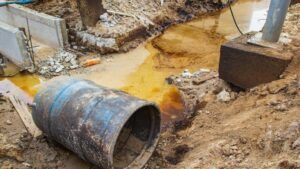The Canadian Council of Ministers of the Environment (CCME) is responsible for the provision of Canadian environmental quality guidelines aimed at the protection of aquatic and terrestrial ecosystems as well as human health. CCME established the “Recommended Canadian Soil Quality Guidelines” in 1997. The soil quality guidelines provide the properties of chemical pollutants, for instance, background information, behaviour and toxicity. It also has the recommended soil quality guideline recommendation for each chemical in Canada. Chemical properties and the specified guidelines aim at the protection of the environment and human health depending on land use actions such as agriculture, industrial, residential and industrial activities. It also highlights the effects on human health and ecology.

CMME used toxicological data to come up with the threshold levels for various pollutants. The soil quality guidelines in Canada also provide recommendations for site-specific remediation initiatives. Environmental quality objectives for each site are developed in accordance with its classification, which is dependent on the level of contamination. Additionally, the soil quality guidelines cover ecological soil contact, protection of indoor air quality, protection of groundwater, and soil and food ingestion by animals (wildlife or livestock).
Generally, the soil quality guidelines aim at safeguarding human health and the environment. It identifies the levels through which soil quality is considered to have a risk on human health and a threat to the environment. The guidelines evaluate exposure points which may either be direct or indirect. They include contaminated water, air, food, and consumer products. Finally, the guideline provides measures on land use which is determined by activities involved and the sensitivity of the specific sites to contamination. Environment and human health protection are achieved through an assessment of the main biological receptors and identification of the exposure pathways.
A quick reference source for Canadian Standards and Guidelines is available on the ESdat.net website. Standards for soil include:
Canadian Drinking Water
AB Tier 1 Soil and Groundwater
AB Tier 2 Appendix A Soil
AB Tier 2 Appendix B Groundwater
BC Reg 375/96 Sch 3.1 Pt 1
BC Reg 375/96 Sch 3.1 Pt 2 & 3
BC Reg 375/96 Sch 3.2
BC Reg 375/96 Sch 3.3
BC Reg 375/96 Sch 3.4
BC Protocol 4 Background concentrations in Soil
BC Protocol 10 Hardness dependant Cadmium and Zinc
BC Protocol 11 Upper Cap
BC Hazardous Waste Regulation
BC WQG – Aquatic Life, Wildlife, Agriculture
BC WQG – Drinking Water
BC WQG – Recreational Water
SK Environmental Quality Guidelines
ON Reg 347 Sch 4 Leachate
ON 4697 Soil, Groundwater & Sediment
ON 7382 Soil, Groundwater & Sediment
ON 3303 Water Quality Objectives
Reference
Canadian Council of Ministers of the Environment (CCME) (2014). Canadian Environmental Quality Guidelines. Retrieved from http://ceqg-rcqe.ccme.ca/en/index.html






